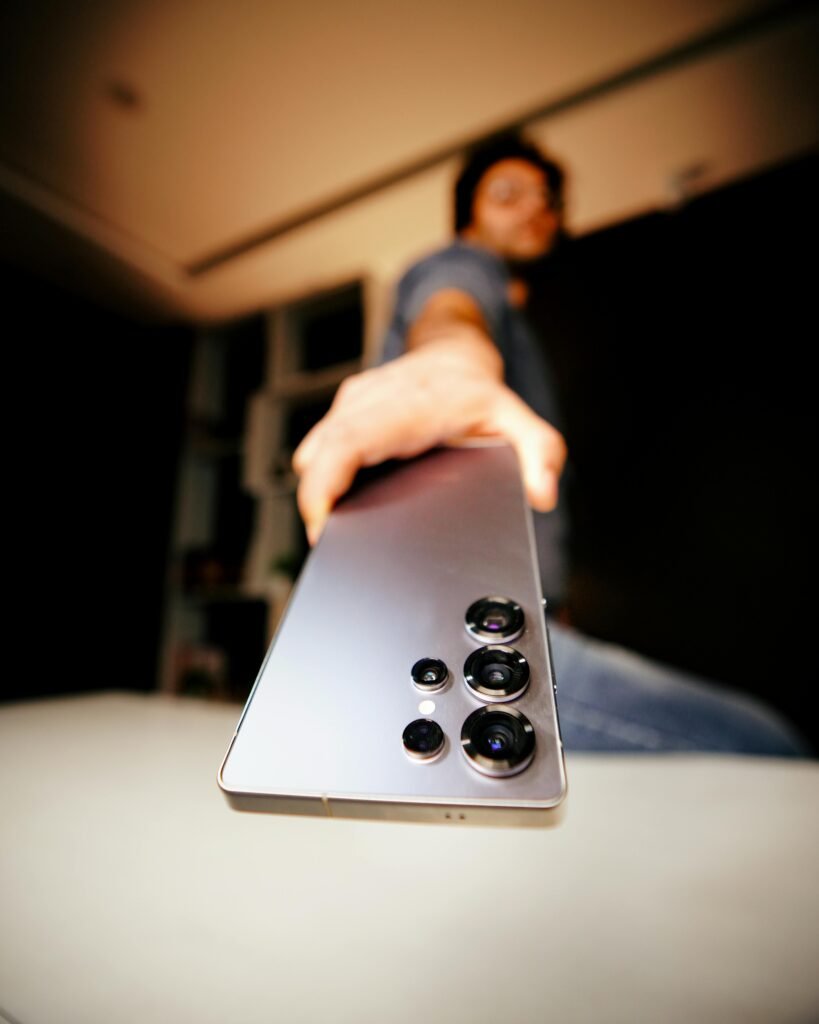Introduction
As technology continues to advance at a rapid pace, smart TVs have evolved from simple digital displays to comprehensive smart devices that integrate seamlessly into our daily lives. By 2026, the landscape of smart televisions has undergone significant transformation, reflecting not only advancements in picture quality and resolution but also enhancements in user experience and connectivity. Smart TVs have transitioned from merely displaying content to becoming interactive multimedia hubs equipped with intelligent features.
In this modern age, one of the most noticeable features of smart TVs is their exceptional picture quality, which often includes high dynamic range (HDR) capabilities, 4K resolution, and even the emergence of 8K options. These advancements deliver stunning visual experiences that immerse viewers in rich colors and fine details, making home viewing increasingly comparable to the cinematic experience. Coupled with sophisticated audio technologies, the sound quality has also seen dramatic improvements, enriching the overall home entertainment experience.
Another crucial aspect to consider is the smart capabilities of these devices. Smart TVs now come with advanced operating systems, offering intuitive user interfaces that simplify navigation and enhance user engagement. Various platforms allow users to seamlessly access their preferred streaming services like Netflix, Amazon Prime, and Disney+, along with built-in applications for social media, gaming, and more. The user-friendliness of these interfaces caters to a diverse audience, making it accessible for all ages.
Compatibility with an array of devices is another significant factor distinguishing leading smart TVs. Whether it be smartphones, tablets, or smart home devices, the ability to connect and communicate through various platforms strengthens the utility of these televisions. Overall, as we look into this comprehensive guide, we will explore the standout models that epitomize these advancements and offer an unparalleled viewing experience in 2026.
What to Look for in a Smart TV
When selecting a smart TV, several key features should be taken into account to ensure that you make a well-informed purchase. One of the most crucial aspects is screen resolution. As technology has advanced, 4K ultra-high-definition (UHD) TVs have become the standard, offering four times the pixel resolution of 1080p. However, 8K TVs are gradually entering the market, providing even sharper images but at a higher price point. Consider your viewing habits and whether the additional resolution is necessary for your needs before making a decision.
Another integral feature to examine is High Dynamic Range (HDR) support. HDR enhances the contrast and color accuracy of the display, allowing for a more vibrant viewing experience. There are several HDR formats available, including HDR10, Dolby Vision, and HLG, which may influence your choice depending on your content consumption, particularly if you subscribe to streaming services that optimize for HDR.
The smart platform of a TV also warrants consideration. Options such as Android TV, Roku, and Tizen come with varying levels of user-friendliness, app availability, and updates. For instance, Android TV often boasts a large selection of apps and integration with Google services, while Roku is lauded for its simplicity and extensive channel offerings. Evaluate which platform aligns best with your preferences.
Additionally, whether you are a gamer or a casual viewer, gaming features are becoming increasingly relevant. Look for televisions that offer low input lag, variable refresh rate (VRR), and compatibility with gaming consoles. Lastly, audio quality should not be overlooked; a good smart TV should have integrated sound that meets your expectations, or you should consider investing in a soundbar or external audio system for an enhanced experience.
Balancing your budget with these desired features is essential, as it helps to narrow down your options without compromising on quality. By integrating these elements into your purchasing decision, you will be well-equipped to choose the smart TV that best fits your lifestyle and preferences.
Top Smart TV Brands of 2026
The smart TV market in 2026 presents a diverse array of brands, each distinguished by unique features and innovations. Leading the pack are well-established manufacturers such as Samsung, LG, Sony, and TCL. These companies have carved a niche for themselves by consistently delivering top-notch performance and user-friendly interfaces, making them reliable choices for consumers.
Samsung continues to dominate the smart TV landscape with its Neo QLED technology, which offers stunning picture quality and advanced gaming features. The brand’s Tizen operating system remains one of the most intuitive and versatile smart TV platforms available. However, potential buyers should note that Samsung TVs can be on the higher end of the price spectrum, which may deter budget-conscious consumers.
LG, on the other hand, is renowned for its OLED technology, which delivers exceptional contrast and vibrant colors. The webOS platform is user-friendly, providing access to a vast selection of apps and services. Despite this, LG TVs sometimes face challenges regarding brightness levels in well-lit environments compared to their LCD counterparts.
Sony’s commitment to high-quality displays is evidenced by its BRAVIA XR series. The integration of cognitive intelligence in image processing enhances viewing experiences significantly. Yet, some consumers may find Sony’s smart TV offerings lack a few of the smart features present in its competitors, which could impact user experience.
Emerging brands like TCL and Hisense have also started to gain traction in the market. TCL combines affordability with advanced features like Dolby Vision and Roku TV, making it a favorite for budget-friendly consumers. Hisense has been making strides with its Quantum Dot technology, offering competitive performance at lower prices, appealing to those looking for value without sacrificing quality.
As the smart TV landscape evolves, consumers are faced with numerous options. Each brand has its strengths and weaknesses, allowing individuals to select the model that best fits their preferences and needs. Whether prioritizing cutting-edge technology or budget considerations, leveraging brand reputation can greatly enhance the buying decision in 2026.
Best Smart TVs by Category
When it comes to selecting the best smart TVs, consumer needs vary significantly. As such, it is crucial to categorize these exceptional models based on specific requirements. Below, we highlight the best-performing smart TVs in key categories: budget options, high-end models, gaming, and streaming.
For those seeking affordability without compromising quality, the Samsung TU8000 is often lauded as the best budget option. This model offers 4K resolution and a crystal clear display, supported by Samsung’s Tizen smart platform. It provides access to popular apps and streaming services, making it a practical choice for cost-conscious consumers who still desire a rich viewing experience.
On the other end of the spectrum, the LG G1 OLED stands out as one of the best high-end models. Renowned for its exceptional picture quality, the OLED technology delivers vibrant colors and deep blacks. The G1 also features a sleek design suitable for wall mounting, while integrating seamlessly with LG’s webOS platform. Its advanced audio features further enhance the immersive experience, rendering it ideal for cinephiles and home theater enthusiasts alike.
Gamers should not overlook the ASUS ROG Swift OLED PG32UQX, which is considered one of the best smart TVs for gaming. This model excels with its low input lag, high refresh rate, and adaptive sync technology, ensuring smooth graphics during intense gaming sessions. Additionally, its HDR capabilities contribute to stunning visuals, making it a top performer in any gaming rig setup.
Lastly, for avid streamers, the Roku Streaming Stick 4K provides outstanding performance when connected to compatible TVs. Although not a TV itself, it transforms any standard television into a smart device, offering access to numerous streaming channels, customizable viewing preferences, and a user-friendly interface. Its compact design allows for easy setup and versatile placement.
In conclusion, understanding the unique features across various categories facilitates informed decisions when selecting a smart TV, ensuring optimal satisfaction based on individual needs.
Innovative Features to Watch For
As we move further into 2026, the evolution of smart TVs is marked by exciting advancements that enhance viewing experiences and integrate seamlessly into users’ lifestyles. One of the most notable trends is the emergence of advanced display technologies such as OLED and MicroLED. These innovations provide outstanding picture quality, remarkable contrast ratios, and vibrant colors, setting new benchmarks for what viewers can expect from their home entertainment. OLED technology offers deep blacks thanks to its self-emissive pixels, while MicroLED displays promise superior brightness and scalability, making them ideal for larger screen sizes.
In addition to display enhancements, artificial intelligence (AI) is playing an increasingly vital role in smart TV functionality. AI-driven features can analyze viewing habits, recommend content tailored to individual preferences, and streamline user interfaces for easier navigation. This personalization enhances overall user experience and ensures that viewers spend less time searching for what to watch and more time enjoying their favorite shows and movies.
Voice control capabilities are another innovative feature that has gained traction in the smart TV market. By incorporating advanced voice recognition technology, smart TVs now allow users to control various functions through simple verbal commands. This hands-free convenience not only simplifies operations—such as changing channels, adjusting volume, or searching for specific content—but also ensures a more engaging interaction with the television.
Moreover, smart TVs are increasingly being integrated into expansive smart home ecosystems. This connectivity enables users to control and monitor connected devices, such as lights, thermostats, and security cameras, directly from their television screens. Such integration enhances home automation experiences, allowing for greater convenience and control over one’s living environment.
These innovative features, from advanced display technologies to AI personal assistants and smart home connectivity, signify a thrilling era for smart TVs in 2026, promising to reshape how we view and interact with our media.
User Experience and Interface Comparisons
When selecting a smart TV, user experience and interface play a pivotal role in determining the overall satisfaction of ownership. The ease of navigation and the accessibility of features greatly influence how consumers interact with their devices. Prominent smart TV platforms, such as LG’s webOS, Samsung’s Tizen, and Google’s Android TV, offer unique designs and functionalities that cater to varied user preferences.
Starting with LG’s webOS, this platform is renowned for its intuitive interface, commonly referred to as the “launcher,” which allows users to access apps and features seamlessly. The navigation is straightforward, supported by a remote control featuring a point-and-click function. This pioneering design enhances usability, especially for those new to smart technology. Moreover, the LG Content Store boasts a wide selection of applications, ensuring that users can access a diverse array of media content.
On the other hand, Samsung’s Tizen OS has evolved to deliver an equally user-friendly experience. Its main dashboard, known as the Smart Hub, integrates various content sources and provides easy access to streaming services. Tizen places a strong emphasis on customization, allowing users to arrange their favorite apps prominently for quick access. The app store is robust, supporting an extensive range of applications, although its performance can vary depending on the specific model.
Lastly, Google’s Android TV presents a different experience with its integration of Google Assistant and a focus on personalized content recommendations. The interface is clean and effective, accommodating voice commands that simplify user interaction. The built-in Google Play Store expands the app selection significantly, catering to users who prioritize variety in their content offerings.
In summary, while LG’s webOS, Samsung’s Tizen, and Google’s Android TV each provide compelling user experiences, the choice largely depends on individual preferences and priorities related to usability, accessibility, and content variety.
Pricing Trends and Budgeting Tips
The smart TV market has experienced significant evolution in pricing over the years, and 2026 is no exception. As technology advances, manufacturers are continuously innovating, which often leads to fluctuations in pricing. In recent years, we have observed a definitive trend toward competitive pricing, largely driven by increased competition among brands. This has resulted in more affordable options being available across various segments, catering to an expanding consumer base.
One of the primary factors influencing pricing in 2026 is the enhancement of features such as 8K resolution, OLED displays, and advanced smart functionalities. As these technologies become more mainstream, prices for entry-level models have dropped, making superior viewing experiences more accessible. Furthermore, the growing popularity of online shopping platforms has intensified price competition, leading to regular discounts and promotional offers.
When planning a purchase, consumers should consider the timing of their acquisition. Seasonal sales, particularly during Black Friday, Cyber Monday, and post-holiday clearance events, often present substantial savings opportunities. Additionally, manufacturers tend to lower prices when introducing new models, allowing budget-conscious shoppers to find last year’s models at reduced rates.
Financing options can also play a pivotal role in making smart TVs more affordable. Many retailers provide installment plans or credit options, enabling consumers to spread the cost over several months. It is essential to scrutinize the terms and interest rates associated with these financing deals to ensure they fit one’s budgetary constraints.
To effectively budget for a smart TV, consumers may begin by determining their desired features and comparing prices across various retailers. Utilizing price comparison websites can enhance shopping efficiency, allowing buyers to make informed decisions while sticking to their financial plans. By being strategic and timing their purchases effectively, consumers can acquire top-tier smart TVs without exceeding their budgets.
Sustainability and Smart TVs
As consumer awareness regarding environmental issues continues to rise, sustainability has become a crucial factor in the purchasing decisions of many electronics, including smart TVs. Manufacturers are increasingly realizing the importance of adopting environmentally friendly practices in their production processes and product designs. This shift is not only beneficial for the planet but also responds to consumer demand for accountability and transparency in how products are made.
One of the primary ways TV manufacturers are demonstrating their commitment to sustainability is through the development of energy-efficient features. Modern smart TVs often come equipped with energy-saving technologies such as automatic brightness control, which adjusts screen illumination based on ambient light, and sleep modes that minimize power consumption during periods of inactivity. These innovations result in reduced energy usage, contributing to lower electricity bills and a decreased carbon footprint. Additionally, many brands are now utilizing materials that are recyclable and more sustainable, including recycled plastics and eco-friendly packaging, to minimize waste.
The lifespan of a smart TV also plays a significant role in sustainability considerations. Higher quality televisions with longer durability mean that consumers can avoid frequent replacements, which ultimately reduces electronic waste. Television manufacturers are reassuringly focusing on producing models designed for longevity, with components that can be easily upgraded or repaired. By investing in a durable smart TV, buyers can contribute to a more sustainable cycle of consumption.
As consumers consider their options in the evolving landscape of smart TVs, it is essential to weigh not only the technological features but also the sustainability practices of the brands they choose. By opting for environmentally friendly options, individuals can make a positive impact on their ecological footprint while enjoying the benefits of modern technology.
Conclusion and Final Recommendations
As we have explored in our in-depth guide on the best smart TVs to buy in 2026, the landscape of television technology continues to evolve rapidly, presenting consumers with a plethora of options. From high-definition displays to integrated smart features, each model offers unique advantages tailored to different viewing preferences and lifestyles.
For consumers who prioritize picture quality, models equipped with OLED technology stand out for their vibrant colors and deep blacks. These TVs provide an immersive viewing experience, particularly beneficial for movie enthusiasts and gamers seeking exemplary performance. On the other hand, consumers more focused on budget considerations should look into affordable LED models that still offer commendable image quality and smart capabilities without straining finances.
Additionally, it is important to consider compatibility with existing devices and smart home features when selecting a smart TV. Models that seamlessly integrate with voice assistants or smart home systems could enhance usability and convenience, making daily interactions more efficient. For families, models that incorporate parental controls and kid-friendly features should also be prioritized to ensure a safe viewing environment for younger audiences.
Furthermore, as streaming services become increasingly prominent, consumers should assess the TV’s support for their preferred platforms. Smart TVs that offer extensive app libraries with consistent updates rank highly for viewers who rely heavily on streaming content. In conclusion, when evaluating the best smart TV for your needs in 2026, consider the specific features, price range, and brand reliability aligned with your viewing habits. By taking the time to research and weigh your options, you can select a model that will not only meet but exceed your entertainment expectations.





